Alexandridi Tamara Minovna: fearless woman at the origins of domestic computer science
Among the names of the pioneers-creators of domestic computers is the name of a courageous woman-scientist - Alexandridi Tamara Minovna. The young activist was directly involved in the creation of the first domestic digital computers, known as M-1 and M-2, simply the beauty gave a piece of herself to the formation and development of the domestic computer business.

Her life path can not be called cloudless: the war years, the post-war devastation ... Being a very young girl with burning eyes, during the Second World War, she went to the front as a radio operator. She had the opportunity to survive in terrible battles for the Crimea, for Stalingrad. She courageously performed her duty in the fight against occupants in Ukraine, Belarus, Poland and Germany.
Tamara was born in 1924 on September 26 in the city of Tomsk. Mother and father broke up the marriage even when Tamara was very little. In 1929, a mother with children, Tamara and her son Tolya, changed her place of residence to the capital of the USSR, Moscow. The Stalin five-year plans, the Stakhanov movement, all around were not full of posters of female models or housewives, but girls-tractor drivers, engineers, radio operators.
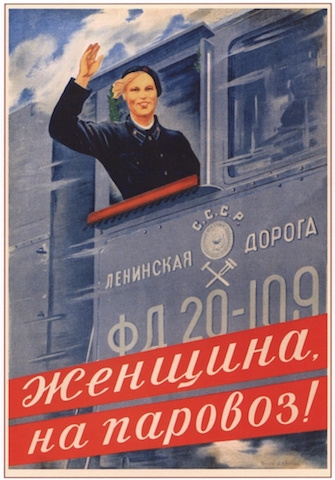

The 30s of the last century is the era of the heyday of radio engineering, the emergence of amateur radio circles, it can be compared with today's computer boom.
Ever since childhood, Tamara fascinated the world of exact sciences, studying in the 10th grade, she began attending courses at the communication school at the Moscow Radio House, having graduated with honors in 1941, she decided to enter the Moscow Power Engineering Institute (MEI) at the radio engineering faculty.
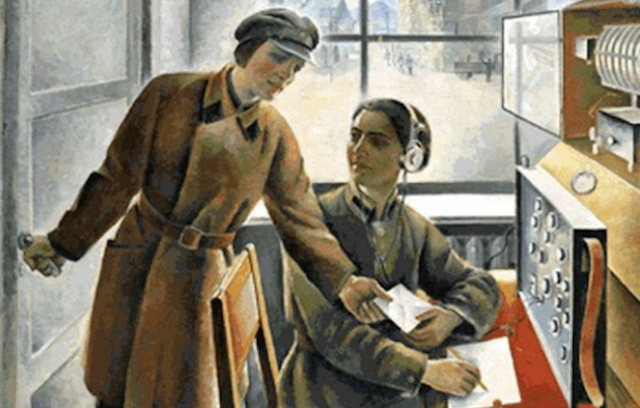
From the memoirs of Tamara Minovna, choosing a profession, the girl took the example of her aunt according to mother of Elena Pavlovna, who was a passionate fan of radio engineering.
But, it was 1941 ... Tamara never got to study, at the age of 17 she voluntarily experienced the beauty of front-line life. In August, Alexandridi was enlisted in the state of an aviation front-line radio station, 91 communications regiment became her front-line family. She was the only girl on the radio station. The fate of Tamara: the thicket was raging around, during the retreat to Sevastopol in 41, their tanker came across a mine, constant bombing, in December the radio station where she served was transported to the Kerch Peninsula, in the history this period is known as the 9 day Kerch-Feodosiya landing operation , the losses were enormous, killing about 32 thousand people. Snow, mud, cold, shelling, and equipment were placed in pit dugouts in which they lived, water had to be taken from puddles - under such conditions, another 4 months was 113 rifle brigade designed to communicate with the command of the army and the front. And then it was May 1942, the operation began under the code name "Hunting for Bustard", in which for 12 days (from 8 to 20 May) Soviet troops suffered heavy losses: about 160 thousand people were killed, wounded, taken prisoner. There was no crossing as such, it was necessary to escape from this hell on our own, Tamara’s crew set up a raft from a car platform for a radio station ... The next stop was Stalingrad.
From the memories of this courageous girl:

In the spring of 1943, Tamara was urgently summoned to Moscow, here she was handed a radio station named "Moscow Radio Amateur". For bravery and courage, the fragile girl was awarded orders and medals.
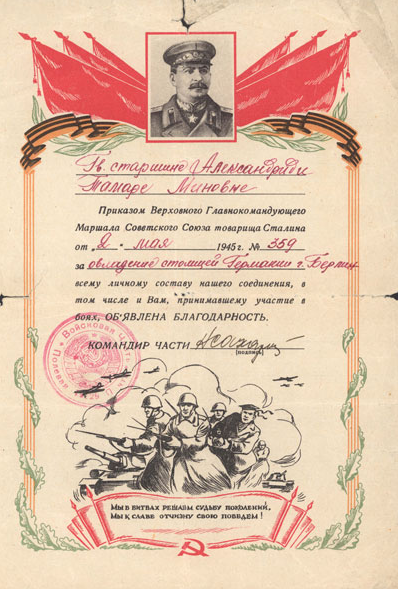
After the war, Tamara Minovna finished the work begun before the outbreak of the war: she replenished the ranks of the diligent students of MEI. The Soviet everyday life began in the schools: painstaking study of science, active participation in the construction of buildings for the institute, sports competitions, and participation in parades. Tamara was a member of the party, the captain of the volleyball institute team, one of the best students of the fifth year.
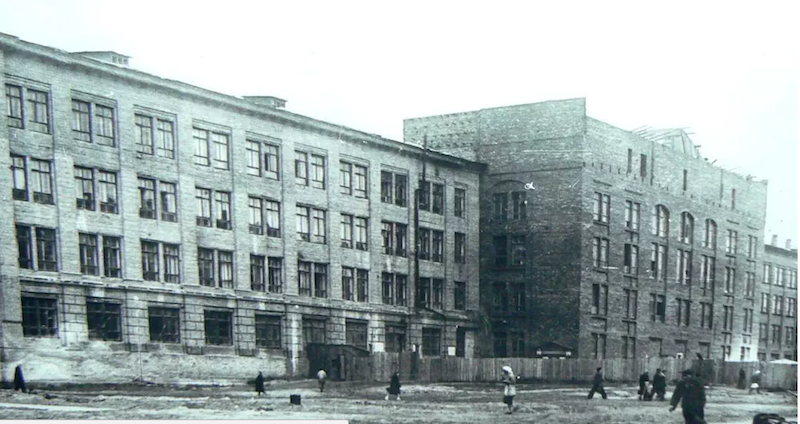
Construction of the main building
The father’s name Alexandridi became fateful, thanks to her Tamara began her career as a developer of the first computers. In 1950, Isaak Bruk (head of the electrical systems laboratory of the Energy Institute of the USSR Academy of Sciences) arrived at the radio engineering faculty on a visit. Brooke's team consisted of representatives of the stronger sex and he did not recruit girls, but having decided that this was a male surname, he added a young graduate, Tamara, to the lists of those invited to work in the laboratory. So she came to young engineers who were at the forefront of the invention of the first Soviet computer systems.
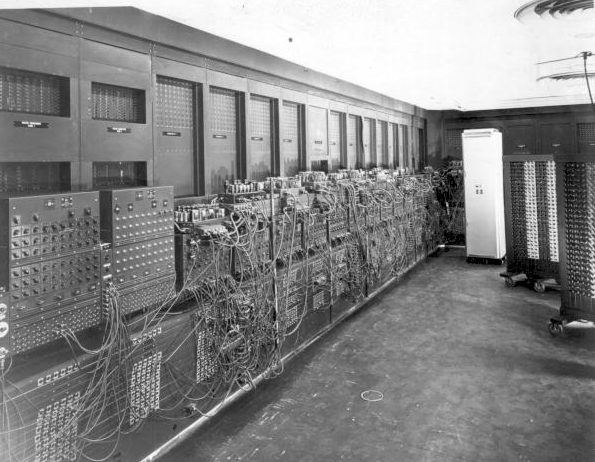
Digital Computer M-1
In 1948, Brooke and Rameev jointly developed a project of a digital computer with strict program control and obtained an inventor's certificate for the invention of the “Automatic Digital Machine”. It was the beginning of the development of digital computers M-1. A team of enthusiastic development engineers from graduates and graduates of the radio engineering faculty of the Moscow Power Engineering Institute, under the leadership of Brooke, has embarked on a most challenging and, at the same time, interesting project. Then she began her acquaintance with the computer and career path and Tamara. Not to mention N.Ya. Matyukhin, he literally was the main developer of the M-1 - a machine that, according to its technical characteristics, belonged to the class of small digital computers.
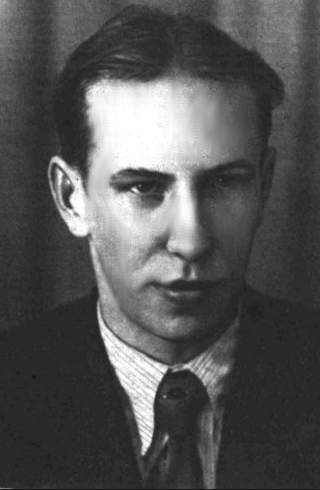
Nikolay Yakovlevich Matyukhin
A well-mannered, tall young man with a shine in his eyes — Kolya Matyukhin — captivated the heart of a young girl. The diploma project on the development of a storage device on cathode ray tubes Tamara did under his strict guidance. She graduated from radio engineering engineer in 1951. With Nicholas, they lived together 34 happy years, raised two children - a son and a daughter. N. Ya. Matyukhin, a friend of the heart and a husband, died in the spring of 1984 at the age of 57, he was seriously ill.
In 1951, the name Alexandridi, at that time Tamara was already a junior researcher, was mentioned in the first scientific report “Automatic digital computer M-1”. M-1 - became the first small digital computer with a binary number system. Instead of electronic tubes, M-1 used German cuprox rectifiers to construct logical elements. Semiconductor diodes are the basis of the arithmetic and control logic of the machine, cathode ray tubes from conventional oscilloscopes were used as elements of the operational memory, and a TTY device served as an input-output device.
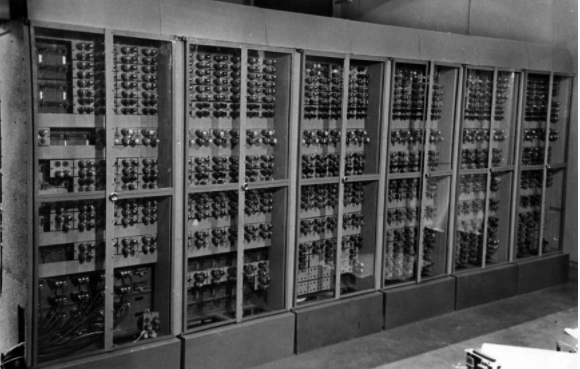
Digital computer M-2
In 1952, engineer Tamara Minovna took her place in the team of developers of digital computers M-2. Together with Lavrenyuk, she was developing an electrostatic storage device on cathode ray tubes (CRT). The CRT was a RAM built on ordinary 13LO37 tubes. Such tubes were used in oscilloscopes with a volume of 512 numbers and a rotation time of 25 μs. The speed of the CMV M-2 was 2000 op / sec. While the number of lamps in the car doubled, its performance increased a hundred times, but this little one required more energy to work and consumed 29 kW. Later in the car began to use RAM on ferrite cores.
In March 1956, the first conference in the USSR was held. It was devoted to computers and was called "Ways of development of the Soviet mathematical engineering and instrument-making." Tamara Minovna did not stand aside: she prepared and made a report on the topic “Electrostatic storage device M-2”.
Tamara Alexandridi participated in the writing of the book “High-speed computer M-2” edited by Brooke. From her pen came the chapter "Electrostatic storage device."
In 1957 Alexandridi continued her studies, becoming an honorary graduate student at the Institute of Automation and Remote Control of the USSR Academy of Sciences.
In 1963, after defending the thesis "Multichannel Digital Regulators" (head of the Academy of Sciences of the USSR VA Trapeznikov), Tamara Minovna plunged into scientific work. She passed on her knowledge and experience to students by engaging in teaching.
In 1966 the book “Digital Regulators” was published, co-authored by Tamara Minovna. In 1967, she took the position of associate professor at the Moscow Automobile and Road Institute (MADI), where in 1981, under her leadership, the Department of Automated Control Systems (ACS) was founded.

In 1985, Tamara Minovna Alexandridi was awarded the academic title - Professor.
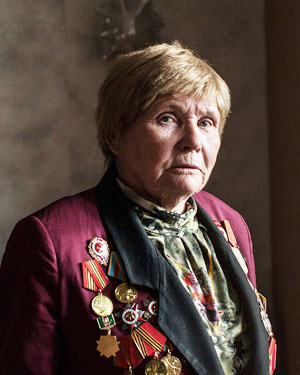
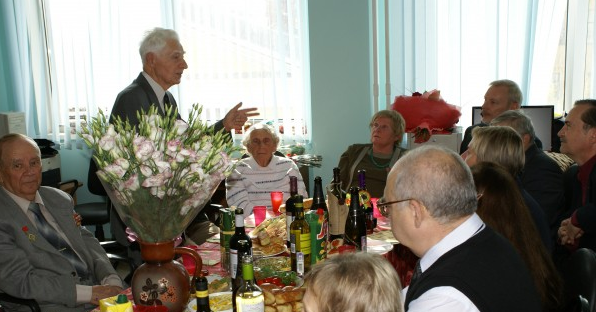
year 2014. 90th anniversary of TM. Alexandria
The enthusiasm and energy of this outstanding woman scientist is enviable. Passing through trials during the war years, she found strength and resilience to take a place alongside outstanding personalities, the developers of the first domestic computers. If you think about how many minds have been involved throughout the history of computer development, you will be especially grateful to the pioneering scientists, because today you shouldn’t use anything that has already been invented and, so to speak, improved benefits and computing power. The choice and scale is simply amazing, the proposals are encouraging, because everyone can choose, according to their requirements and capabilities, any modern "computer", a ready-made solution offered by providers, ranging from cloud-based VPS to individual infrastructure created just for your project.
As advertising. Stock! Only now get up to 4 months of free use of VPS (KVM) with dedicated drives in the Netherlands and the USA (configurations from VPS (KVM) - E5-2650v4 (6 Cores) / 10GB DDR4 / 240GB SSD or 4TB HDD / 1Gbps 10TB - $ 29 / month and above, options with RAID1 and RAID10 are available) , a full-fledged analogue of dedicated servers, when ordering for a period of 1-12 months, the conditions of the promotion are here, existing subscribers can receive a 2-month bonus!
How to build the infrastructure of the building. class c using servers Dell R730xd E5-2650 v4 worth 9000 euros for a penny?

Her life path can not be called cloudless: the war years, the post-war devastation ... Being a very young girl with burning eyes, during the Second World War, she went to the front as a radio operator. She had the opportunity to survive in terrible battles for the Crimea, for Stalingrad. She courageously performed her duty in the fight against occupants in Ukraine, Belarus, Poland and Germany.
Tamara was born in 1924 on September 26 in the city of Tomsk. Mother and father broke up the marriage even when Tamara was very little. In 1929, a mother with children, Tamara and her son Tolya, changed her place of residence to the capital of the USSR, Moscow. The Stalin five-year plans, the Stakhanov movement, all around were not full of posters of female models or housewives, but girls-tractor drivers, engineers, radio operators.


The 30s of the last century is the era of the heyday of radio engineering, the emergence of amateur radio circles, it can be compared with today's computer boom.
Ever since childhood, Tamara fascinated the world of exact sciences, studying in the 10th grade, she began attending courses at the communication school at the Moscow Radio House, having graduated with honors in 1941, she decided to enter the Moscow Power Engineering Institute (MEI) at the radio engineering faculty.

From the memoirs of Tamara Minovna, choosing a profession, the girl took the example of her aunt according to mother of Elena Pavlovna, who was a passionate fan of radio engineering.
War years
And May rushed in, that unforgettable May with short nights, when, having got used to four years of war to tear shells, howling land mines, the thunder of guns, the ground seemed deaf from the silence that descended on it. The war ended, and those who survived returned home to return to peaceful life - to plow the land, teach children, build houses, and listen to lectures in college audiences.
But, it was 1941 ... Tamara never got to study, at the age of 17 she voluntarily experienced the beauty of front-line life. In August, Alexandridi was enlisted in the state of an aviation front-line radio station, 91 communications regiment became her front-line family. She was the only girl on the radio station. The fate of Tamara: the thicket was raging around, during the retreat to Sevastopol in 41, their tanker came across a mine, constant bombing, in December the radio station where she served was transported to the Kerch Peninsula, in the history this period is known as the 9 day Kerch-Feodosiya landing operation , the losses were enormous, killing about 32 thousand people. Snow, mud, cold, shelling, and equipment were placed in pit dugouts in which they lived, water had to be taken from puddles - under such conditions, another 4 months was 113 rifle brigade designed to communicate with the command of the army and the front. And then it was May 1942, the operation began under the code name "Hunting for Bustard", in which for 12 days (from 8 to 20 May) Soviet troops suffered heavy losses: about 160 thousand people were killed, wounded, taken prisoner. There was no crossing as such, it was necessary to escape from this hell on our own, Tamara’s crew set up a raft from a car platform for a radio station ... The next stop was Stalingrad.
From the memories of this courageous girl:
There were very strong battles. The bombing almost did not stop. And suddenly the order: immediately curl up and break through the bridge to the other side of the Don, since the Germans can take it from hour to hour. We quickly curled up and started off, but before the bridge near our car, on which the radio station was installed, the engine suddenly stopped. The men tried to run it, but nothing worked. At this time, a truck arrived from our own communications regiment, the officer asked what was the matter. Well, they told, and he says: "Let the men dismantle the radio station and transfer it to the cars that follow us, and take the girl with us." I moved into the back of a truck, and after a while we got to the city of Kalach. And my comrades with the radio station did not appear.

In the spring of 1943, Tamara was urgently summoned to Moscow, here she was handed a radio station named "Moscow Radio Amateur". For bravery and courage, the fragile girl was awarded orders and medals.

After the war, Tamara Minovna finished the work begun before the outbreak of the war: she replenished the ranks of the diligent students of MEI. The Soviet everyday life began in the schools: painstaking study of science, active participation in the construction of buildings for the institute, sports competitions, and participation in parades. Tamara was a member of the party, the captain of the volleyball institute team, one of the best students of the fifth year.

Construction of the main building
The father’s name Alexandridi became fateful, thanks to her Tamara began her career as a developer of the first computers. In 1950, Isaak Bruk (head of the electrical systems laboratory of the Energy Institute of the USSR Academy of Sciences) arrived at the radio engineering faculty on a visit. Brooke's team consisted of representatives of the stronger sex and he did not recruit girls, but having decided that this was a male surname, he added a young graduate, Tamara, to the lists of those invited to work in the laboratory. So she came to young engineers who were at the forefront of the invention of the first Soviet computer systems.

Digital Computer M-1
In 1948, Brooke and Rameev jointly developed a project of a digital computer with strict program control and obtained an inventor's certificate for the invention of the “Automatic Digital Machine”. It was the beginning of the development of digital computers M-1. A team of enthusiastic development engineers from graduates and graduates of the radio engineering faculty of the Moscow Power Engineering Institute, under the leadership of Brooke, has embarked on a most challenging and, at the same time, interesting project. Then she began her acquaintance with the computer and career path and Tamara. Not to mention N.Ya. Matyukhin, he literally was the main developer of the M-1 - a machine that, according to its technical characteristics, belonged to the class of small digital computers.

Nikolay Yakovlevich Matyukhin
A well-mannered, tall young man with a shine in his eyes — Kolya Matyukhin — captivated the heart of a young girl. The diploma project on the development of a storage device on cathode ray tubes Tamara did under his strict guidance. She graduated from radio engineering engineer in 1951. With Nicholas, they lived together 34 happy years, raised two children - a son and a daughter. N. Ya. Matyukhin, a friend of the heart and a husband, died in the spring of 1984 at the age of 57, he was seriously ill.
In 1951, the name Alexandridi, at that time Tamara was already a junior researcher, was mentioned in the first scientific report “Automatic digital computer M-1”. M-1 - became the first small digital computer with a binary number system. Instead of electronic tubes, M-1 used German cuprox rectifiers to construct logical elements. Semiconductor diodes are the basis of the arithmetic and control logic of the machine, cathode ray tubes from conventional oscilloscopes were used as elements of the operational memory, and a TTY device served as an input-output device.

Digital computer M-2
In 1952, engineer Tamara Minovna took her place in the team of developers of digital computers M-2. Together with Lavrenyuk, she was developing an electrostatic storage device on cathode ray tubes (CRT). The CRT was a RAM built on ordinary 13LO37 tubes. Such tubes were used in oscilloscopes with a volume of 512 numbers and a rotation time of 25 μs. The speed of the CMV M-2 was 2000 op / sec. While the number of lamps in the car doubled, its performance increased a hundred times, but this little one required more energy to work and consumed 29 kW. Later in the car began to use RAM on ferrite cores.
In March 1956, the first conference in the USSR was held. It was devoted to computers and was called "Ways of development of the Soviet mathematical engineering and instrument-making." Tamara Minovna did not stand aside: she prepared and made a report on the topic “Electrostatic storage device M-2”.
Tamara Alexandridi participated in the writing of the book “High-speed computer M-2” edited by Brooke. From her pen came the chapter "Electrostatic storage device."
In 1957 Alexandridi continued her studies, becoming an honorary graduate student at the Institute of Automation and Remote Control of the USSR Academy of Sciences.
In 1963, after defending the thesis "Multichannel Digital Regulators" (head of the Academy of Sciences of the USSR VA Trapeznikov), Tamara Minovna plunged into scientific work. She passed on her knowledge and experience to students by engaging in teaching.
In 1966 the book “Digital Regulators” was published, co-authored by Tamara Minovna. In 1967, she took the position of associate professor at the Moscow Automobile and Road Institute (MADI), where in 1981, under her leadership, the Department of Automated Control Systems (ACS) was founded.

In 1985, Tamara Minovna Alexandridi was awarded the academic title - Professor.


year 2014. 90th anniversary of TM. Alexandria
The enthusiasm and energy of this outstanding woman scientist is enviable. Passing through trials during the war years, she found strength and resilience to take a place alongside outstanding personalities, the developers of the first domestic computers. If you think about how many minds have been involved throughout the history of computer development, you will be especially grateful to the pioneering scientists, because today you shouldn’t use anything that has already been invented and, so to speak, improved benefits and computing power. The choice and scale is simply amazing, the proposals are encouraging, because everyone can choose, according to their requirements and capabilities, any modern "computer", a ready-made solution offered by providers, ranging from cloud-based VPS to individual infrastructure created just for your project.
As advertising. Stock! Only now get up to 4 months of free use of VPS (KVM) with dedicated drives in the Netherlands and the USA (configurations from VPS (KVM) - E5-2650v4 (6 Cores) / 10GB DDR4 / 240GB SSD or 4TB HDD / 1Gbps 10TB - $ 29 / month and above, options with RAID1 and RAID10 are available) , a full-fledged analogue of dedicated servers, when ordering for a period of 1-12 months, the conditions of the promotion are here, existing subscribers can receive a 2-month bonus!
How to build the infrastructure of the building. class c using servers Dell R730xd E5-2650 v4 worth 9000 euros for a penny?
All Articles